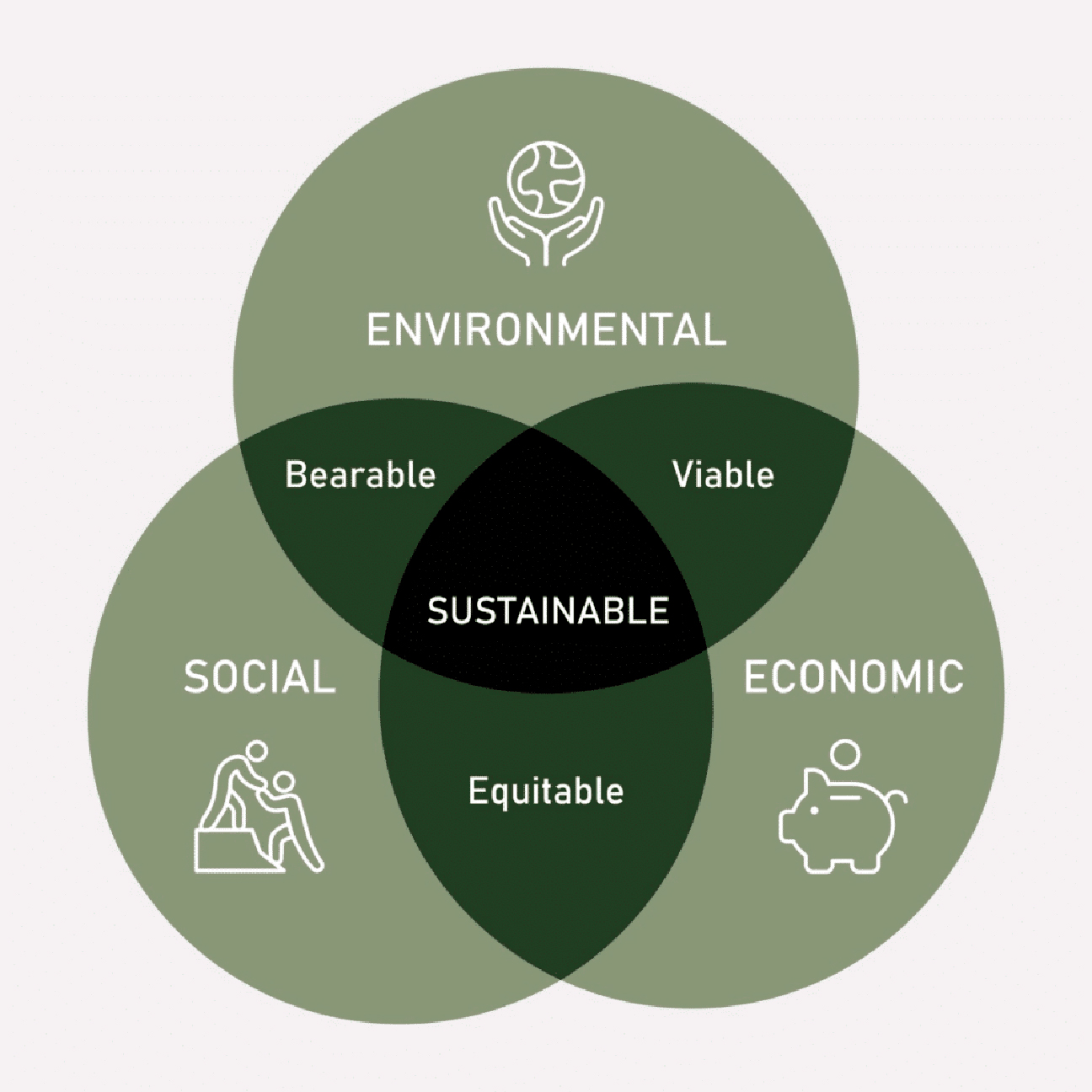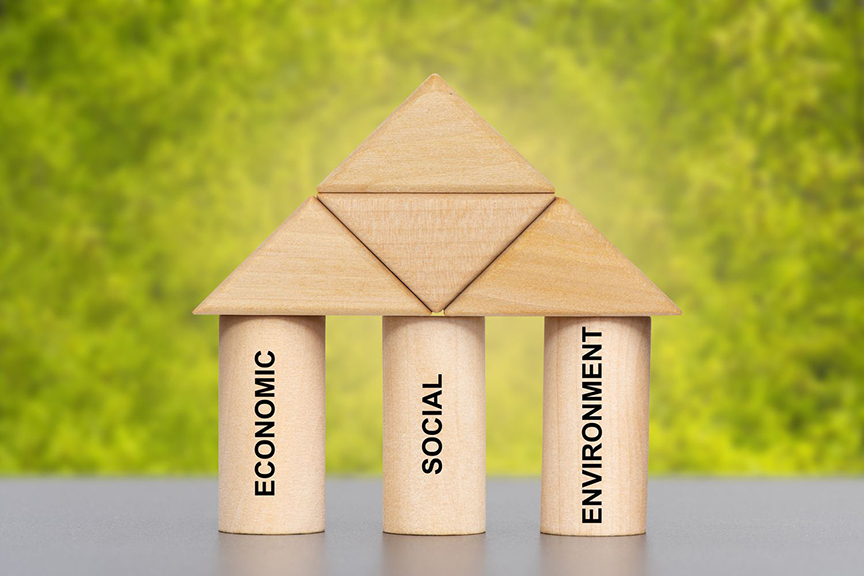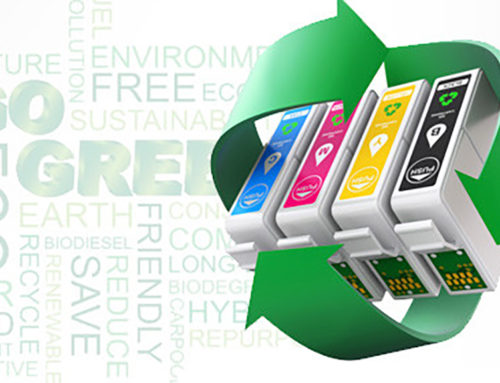In an era where our planet faces unprecedented challenges, the concept of sustainability has taken center stage. Illustrated as a triangle with three interconnected pillars, sustainability encompasses economic viability, environmental protection, and social equity. These pillars are the cornerstones of a harmonious coexistence between humanity and the planet. In this article, we explore the significance of these three pillars and their role in shaping the future of our world.
The Three Pillars of Sustainability
Imagine sustainability as a triangle with economic viability, environmental protection, and social equity forming its three corners. These pillars serve as a guide to navigate the complexities of achieving sustainable development. Each pillar is essential, and a harmonious balance between them is crucial for a prosperous future.
- Economic Viability: This pillar signifies the importance of maintaining a robust economy while ensuring that it does not come at the expense of the environment or society. Sustainable economic practices prioritize long-term financial stability, responsible resource management, and equitable wealth distribution.
- Environmental Protection: At the heart of sustainability lies the preservation and restoration of our planet’s ecosystems. Environmental protection involves reducing our ecological footprint, mitigating climate change, conserving biodiversity, and adopting eco-friendly technologies and practices.
- Social Equity: Social equity is about fostering a just and inclusive society where every individual has access to basic needs, opportunities, and a high quality of life. It addresses the disparities in wealth, resources, and opportunities among different populations, both locally and globally.

World Population and Sustainability
The global population has surpassed 7 billion people, exerting immense pressure on our planet’s resources. With this growth comes a heightened demand for resources like energy, water, and food. However, this demand is not evenly distributed. A glaring indicator of unsustainability is the stark wealth inequality that persists worldwide. Over a third of the global population still lives in poverty, lacking access to essential resources.
A study by the United Nations University revealed that the richest 1% of adults own nearly 30% of the world’s wealth. This extreme wealth imbalance is reflected in resource consumption patterns, where developed nations consume disproportionately more than their fair share.
Population growth is concentrated in developing countries, while resource consumption and pollution are higher in developed nations. This growing disparity threatens the delicate balance between the three sustainability pillars.
Viewpoints for Sustainability
Sustainability is not just a set of principles; it’s a mindset that can be approached from various perspectives. The motivations for embracing sustainability often align with one’s worldview:
- The Ecologist: Ecologists see humans as an integral part of the planet’s ecosystem. They believe in protecting nature and humanity because both hold intrinsic value. For ecologists, the connection between humans and the environment is inseparable.
- The Environmentalist: Environmentalists view nature as distinct from humanity but essential for human survival. They advocate for responsible stewardship of the planet, ensuring its preservation for future generations.
- The Economist: Economists acknowledge the unsustainability of a consumer-driven culture that treats finite resources as an infinite source of income. However, they place faith in market forces and technological advancements to avert a natural crisis. They believe that, left to its own devices, the system will find solutions to sustainability challenges.
Sustainability is not a one-size-fits-all concept; it’s a multifaceted approach to addressing the complex challenges we face today. The three pillars of sustainability—economic viability, environmental protection, and social equity—form the foundation upon which a better future can be built.
As we grapple with a growing population, resource scarcity, and increasing inequality, it’s crucial to recognize that these pillars are interdependent. Achieving sustainability requires finding a delicate balance that ensures economic prosperity, protects our environment, and promotes social justice.
Ultimately, our motivations for pursuing sustainability—whether driven by ecological values, a commitment to preserving nature for human survival, or faith in economic mechanisms—shape our understanding of this vital concept. In this ever-changing world, embracing sustainability is not just a choice; it’s a necessity for the well-being of current and future generations.






